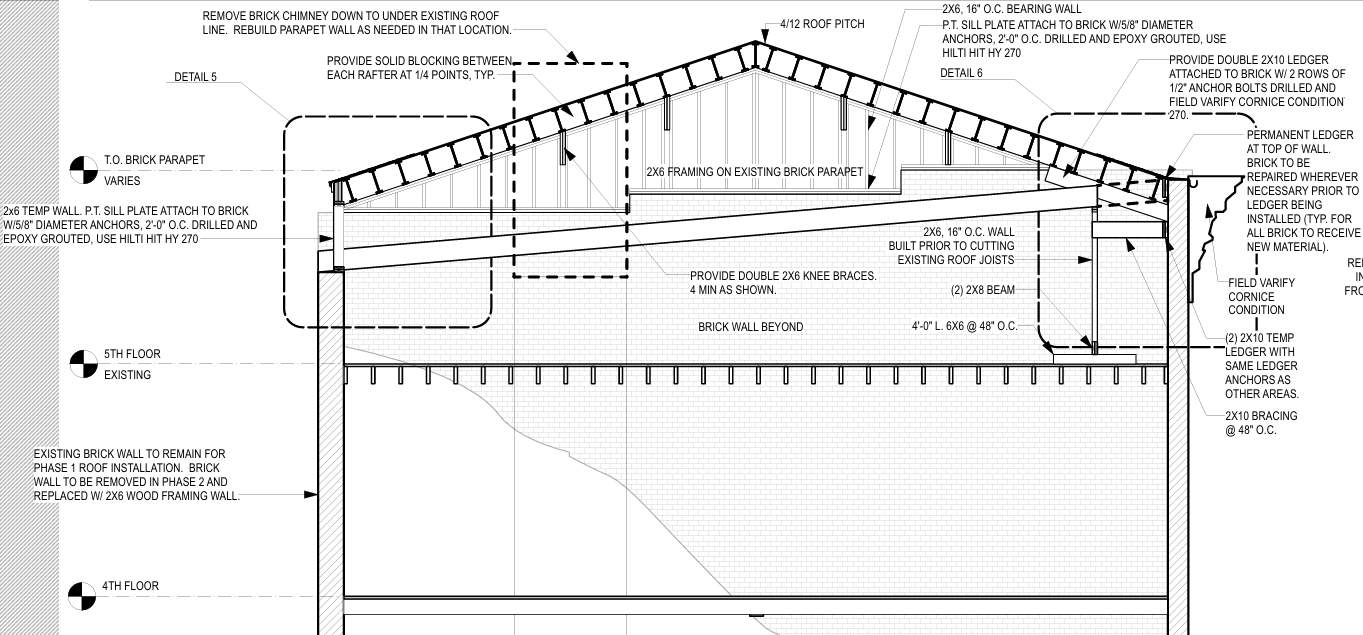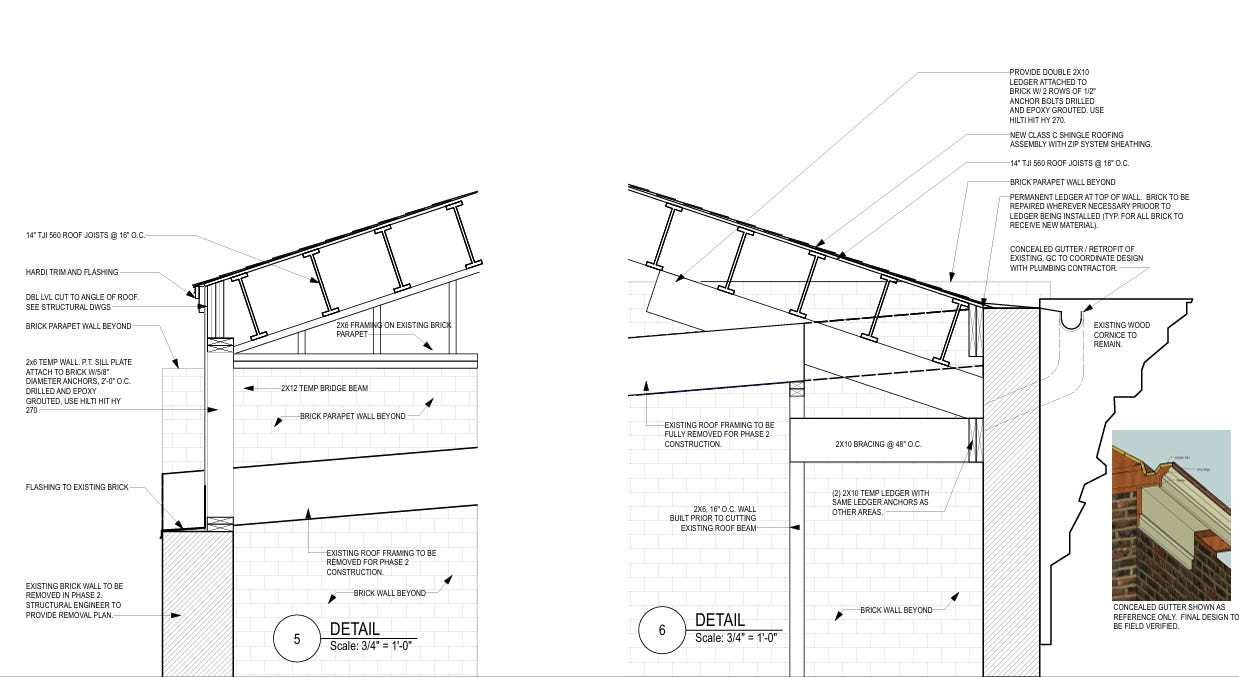The Rehab Delay Playbook: 5 Moves That Saved My Project
It’s the first rainstorm after we removed an asbestos roof when we get a call from out tenant letting us know our contractor left the job site exposed with nothing but shredded plastic, duct tape, and old nails. If you’ve been at the center of mayhem, you know. Working away on a large project and dealing with the daily grind of typical problems when suddenly problems start to snowball. A big part of managing projects is ensuring that the rate of problem solving equals the rate of problem discovery. But once in a while, the snowball starts to roll, and the problems surface faster and faster. Soon enough, figuring out what to prioritize and how to clear the deck of problems becomes nearly impossible. For some, this sounds like a recipe for crippling anxiety. In reality, sometimes the most efficient way to solve a problem is to dive in and figure it out on the fly. There is simply not enough information to determine the right solution until you are neck-deep in trying to solve the problem.
On our Troy project, mayhem has reared its ugly head, challenging us to solve some difficult problems right now. This episode of mayhem began with the removal of the asbestos roof. While the removal went smoothly, the details of our post-project expectations were not well defined. While we focused on ensuring that all licenses and permits were in place, along with a competitive set of bids and a detailed scope of work, we neglected to focus on the after-project details—specifically the temporary roof. Having never needed a temporary roof, we had no experience defining or verifying these requirements. So, while the job went smoothly, the mayhem only became visible when the first rainstorm came.
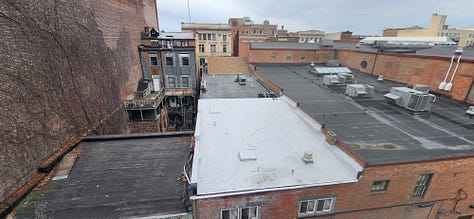

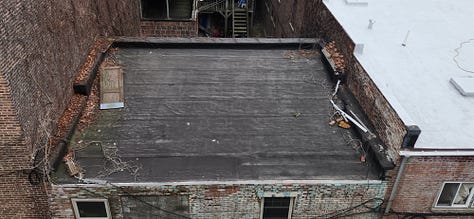
For a week after the old roofing was bagged up and removed from the project, sunshine and warm temperatures lulled us into a sense of complacency. The passing days of upstate New York fall brought rain and the discovery that the temporary roof used by the abatement contractor was useless. A rainstorm rolled in, and the entire job site was soaked. Sure, there was a huge plastic sheet covering the roof, but the nails left over from the roof tear-out had shredded the plastic as it undulated in the wind during those recent summer days. During the storm, water came in everywhere, and the tenant still living on site had some of her belongings get soaked.
In hindsight, we should have spent more time focusing on the details of the scope of work defined in our agreement. While 6-mil plastic is thick for a garbage bag, for temporary roofing, polyester tarps are your best bet. For temporary roofs, tarps should be installed on 2x4s attached to the roof structure so they don’t rub against those nasty nails that shredded our first temporary roof. After experiencing indoor showers on the job, we called in professional roofers to put a proper temporary roof on.
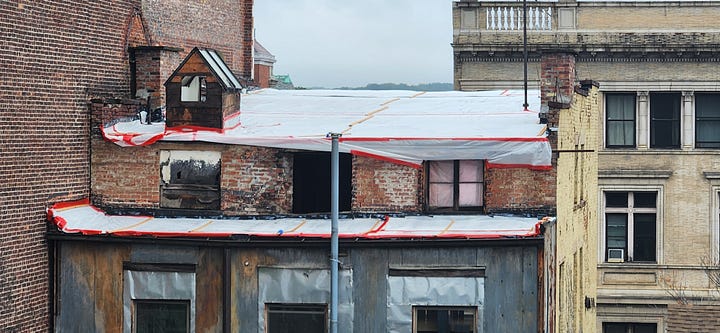

The long-term resolution of our problem is a new roof, of course. The only complication is that we’ve chosen to raise the roof to convert the building’s fifth floor from a 100-year-old attic into amazing loft space for a couple of apartments. So while dealing with rain coming in, we also have to find masons to repair the parapet walls, framers to build the structure for the new roof, and roofers to put on the new roof. For all of that to happen, the architect needs to draw up the designs, the engineer needs to ensure all structural elements are safe, and all documentation needs to be submitted to the municipality to get a permit for this work.
One of our main challenges has been delays caused by our engineering firm. In this business, the buck stops with the person specifying the design. Nothing can move forward until the architect and engineer “stamp” the plans. Once the plans are stamped, the architect and engineer have put their professional licenses and insurance on the line. The stamp is a legal act where the professionals take responsibility for the design and hope they use the highest professional standards. In our case, there were many complicating factors, not least of which is that we’re dealing with a more than 200-year-old building that already had a floor added about 100 years ago.
As you can see in the drawings, we need to demolish some old chimneys, repair the parapets, add sill plates, frame up the structure, and build an entirely new roof.
The current source of our mayhem is an unprepared engineering firm. In short, sometimes critical team members drop the ball. The difference with this particular team member is that they are critical to orchestrating the project implementation plan. In construction, nothing can move forward until a licensed professional has certified that the new construction and its methods will result in a safe structure built in a safe manner. For simple construction, the architect will probably feel comfortable without an engineer, but when you’re tearing off the roof and blowing out the entire back wall, real calculations are needed to ensure safety. In the end, it all lands on the shoulders of the engineer. When the engineer fails to deliver in a timely manner, everyone waits.
Real estate investing delays aren’t just inconvenient, they’re nearly unavoidable in historic buildings. Engineering setbacks and professional tardiness can feel like running through a pool of molasses. How you respond to these challenges will define your long-term success more than the delays themselves. Here are five strategies to help navigate delays:
Expect friction, plan for slack. Build buffers into your timelines and budgets. A 6-month rehab might take 8 months. A permit promised in 2 weeks could stretch to 6. Padding your expectations isn’t pessimism; it’s strategic realism.
Vet for reliability, not just credentials. References and repeat engagements are gold. On this project, we felt it would be best to work with a team that had closely worked with our architecture studio in the past. Unfortunately, their history of timely delivery of quality work didn’t materialize this time.
Document everything. Keep written records of agreements, updates, and changes. It’s not just about protecting yourself—it’s about creating a culture of professionalism.
Stay calm, stay curious. Delays often reveal deeper inefficiencies. Use them as diagnostic tools. Ask if this is a one-off issue or a symptom of a broken workflow. Every hiccup is a chance to refine your systems.
Lead with empathy but enforce boundaries. People make mistakes. Life happens. But your investment deserves respect. Be firm, fair, clear about expectations, and don’t be afraid to pivot when standards aren’t met. Hire slowly and fire quickly.
Real estate isn’t just about bricks and cash flow; it’s about resilience. The most successful investors aren’t the ones who avoid problems, but those who build systems that absorb them. So when the engineer misses another deadline or the contractor goes silent, take a breath, adjust your plan, and keep building. Your future portfolio will thank you.
Ready for more insights from the field? I’ve made the expensive mistakes so you don’t have to. Subscribe to get weekly strategies, real numbers, and unfiltered lessons from 25+ years of actual deals. No theory, no fluff, just lessons learned and what actually works when your money is on the line.




